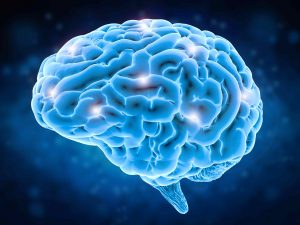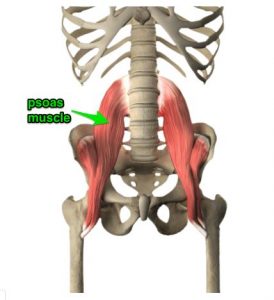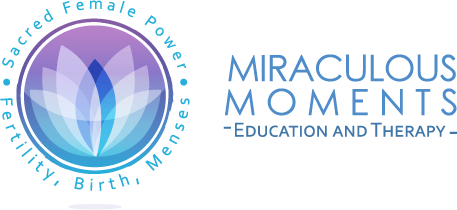This blog is the third in a series of three exploring the experience of birth trauma. In the first blog, I provided a model for understanding how birth trauma happens and why it’s so debilitating. In the second, I shared some real life stories of some of my clients and how birth trauma affected them. In this final article, I describe the process of recovering from birth trauma and how we have a naturally present healing mechanism inside us that can support us to come out the other side.
Understanding how our brains process traumatic events can, in itself, be helpful. The brain processes millions of bits of data continually. When it’s not distressing, this data is sent to the part of the brain associated with memories and feelings, which then connects it to similar experiences from the past. This information in turn is forwarded to another area of the brain where it’s turned into a story about our experience.

Trauma, however, is processed differently because it produces an overwhelming, intense arousal of our whole system. The information is stored as fragments in the sensory part of the brain, where they remain chaotic, compartmentalised and disconnected from the memories, feelings and bigger story.
During traumatic life events, the deep structures of the brain activate an alarm response involving the neurotransmitters dopamine, adrenaline and noradrenaline (the catecholamines). Although our system is designed to deactivate after a stressful event has passed, sometimes the ‘on’ button gets stuck and won’t switch off. We then experience anxiety, dread, panic attacks, social aversion and other symptoms of post traumatic stress. As I describe shortly, there is a way to switch off this alarm and re-establish the body’s natural state of wellbeing.
In my work with clients, I use a number of simple processes to facilitate their recovery. I listen exhaustively to their story, clarifying what actually happened and providing a big-picture overview so they have a context for understanding. Then I guide them into their own deep relaxation response, a well-documented, self-healing mechanism shown to alleviate a wide variety of physical, emotional and psychological conditions.
Once clients are experiencing the comfort of their deep relaxation response, I enlist a range of hypnotherapy, neuro-linguistic programming (NLP) and other soulful processes to enable them to integrate and reframe what happened, without being re-traumatised in the process. The brain lock begins to let go, so the fragmented data can be processed.
One of these helpful processes is the tremor. In his book, The Revolutionary Trauma Release Process, David Berceli1 describes a simple, highly effective way of releasing trauma out of our bodies. The flexor muscles in the

https://www.yoganatomy.com/psoas-resources/#ma
core of our body – the psoas muscles – contract in response to the alarm chemicals, the catecholamines. The psoas muscles connect the back with the pelvis and the legs, mobilising us to run or defend ourselves.
Chronically contracted psoas muscles hold a deep tension that doesn’t respond to massage, exercise or a soak in the bath. The most effective way of releasing this tension is a series of simple leg and pelvis exercises that engage the psoas. The exercises evoke a tremor or gentle shaking, which is the body’s natural way of completing the discharge of energy triggered by the trauma response.
Children (and animals) tremble freely when they experience traumatic events but as adults we’ve been socialised out of this ability because it makes us feel vulnerable, out of control, or is seen as a sign of weakness. The gentle tremor evoked by these exercises loosens up the chronic tension stored in the psoas muscles and sends a signal to the brain that it can now turn off its alarm. Like a key in a lock, the tension begins to let go.
In my private practice, my goal is to facilitate my clients’ soul-retrieval. I create a secure container in which they can safely do their healing. In a way, I act as a midwife to the client’s birthing of herself. When the healing occurs, there’s no longer pain at the memory, but rather memory of the pain.
For example, after our sessions together, Danielle stopped crying when she talked about her first birth and went on to experience a peaceful, empowering and healing labour with her second baby. Kerry, who had torn badly during her first birth, noticed a dramatic improvement after her first session. She told me she was no longer distressed about the birth and had stopped blaming herself; she was also delighted to have her sex life back again. Tamara, whose baby had spent 5 days in NICU, arrived beaming for her second session, announcing that her distress was completely gone: “I feel such a huge difference, I can’t thank you enough!” She told me she was planning her second baby. And Sarah came to a peaceful acceptance of her birth experience and was relieved to feel the love for her daughter finally free to express itself.
I consider it an honour to work with these women. It takes courage to make that healing journey. In addition to resolving birth trauma, I’ve used the same processes with other clients (both male and female) to address traumas like the death of a baby or other loved ones, childhood abuse (sexual, physical, emotional), sexual assault, car accidents, phobias and panic attacks.
Trauma can visit us in all kinds of ways. It can happen during labour and birth, as it did for Danielle, Kerry, Tamara and Sarah. Or it can happen through a car accident, a SIDS death, a flood, a cyclone or the death of a spouse. Trauma is part of life on planet Earth. As adaptive mammals, we’re designed with innate abilities to endure traumatic events. What’s more, the trauma itself can lead on to expansion and transformation.
When the bubble of our previous worldview is ruptured by trauma, it’s an opportunity for self-exploration and self re-invention that can accelerate our evolution. No-one wants adversity but despite how bleak things might look initially, there is a silver lining.

References
- Berceli, David. (2008). The Revolutionary Trauma Release Process. Namaste Publishing, Vancouver.

